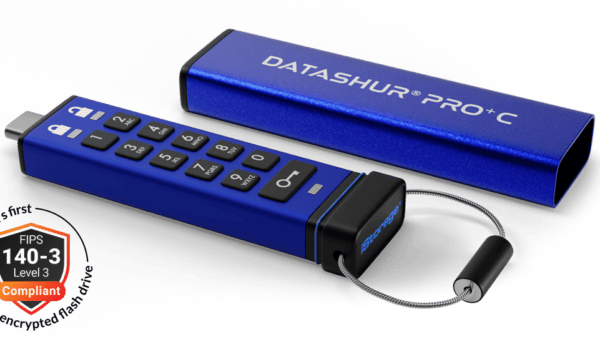Introduction
In today’s fast-paced and competitive restaurant industry, effective communication and customer engagement are paramount. One innovative solution that has gained traction is the use of digital signage templates. These customizable and dynamic displays provide a modern way to present menus, promotions, and other relevant information, enhancing the overall dining experience. This article delves into the concept of restaurant digital signage templates, their benefits, design principles, implementation strategies, and future trends, offering a comprehensive guide for restaurateurs looking to leverage this technology.
The Concept of Restaurant Digital Signage Templates
Definition and Overview
Restaurant digital signage templates are pre-designed layouts used to create digital displays for various purposes within a restaurant setting. These templates can be customized with specific content such as menu items, promotions, events, and announcements. They are displayed on digital screens strategically placed throughout the restaurant, offering a visually appealing and dynamic way to communicate with customers.
Historical Context
The use of digital signage in restaurants dates back to the early 2000s, initially adopted by fast-food chains and quick-service restaurants. Over the years, advancements in display technology and content management systems (CMS) have made digital signage more accessible and versatile, leading to its widespread adoption across various types of dining establishments, from casual cafes to upscale restaurants.
Benefits of Restaurant Digital Signage Templates
Enhanced Customer Experience
Visual Appeal
Digital signage templates utilize high-definition screens to display vibrant images and animations, making the content more engaging and visually appealing. This enhanced visual appeal can capture customers’ attention and create a memorable dining experience.
Real-Time Updates
One of the key advantages of digital signage is the ability to update content in real-time. Restaurants can easily change menu items, prices, and promotions without the need for reprinting materials. This flexibility ensures that the information displayed is always accurate and up-to-date.
Operational Efficiency
Cost Savings
While the initial investment in digital signage may be higher than traditional printed materials, the long-term savings are significant. There are no recurring costs for printing new menus or promotional materials, and updates can be made remotely, reducing labor costs associated with manual changes.
Streamlined Processes
Digital signage templates can be integrated with POS systems, allowing for seamless updates and synchronization across multiple screens and locations. This integration simplifies content management and ensures consistency, reducing the risk of errors and discrepancies.
Marketing and Promotions
Dynamic Content
Digital signage templates enable the display of dynamic content such as videos, animations, and slideshows. This versatility allows restaurants to showcase their offerings in an engaging way, highlight daily specials, and promote upcoming events, driving customer interest and sales.
Targeted Messaging
With digital signage, restaurants can tailor their messages to different times of the day, days of the week, or specific customer segments. For example, breakfast items can be highlighted in the morning, while happy hour specials can be promoted in the late afternoon. This targeted approach enhances the relevance of the content and increases its impact.
Sustainability
Reducing Waste
By eliminating the need for printed menus and promotional materials, digital signage contributes to sustainability efforts. This reduction in paper waste aligns with growing consumer preferences for eco-friendly practices and can enhance the restaurant’s reputation as a socially responsible business.
Designing Effective Restaurant Digital Signage Templates
Clarity and Readability
Font and Text Size
Choosing the right font and text size is crucial for readability. Use clear, legible fonts and ensure that text size is large enough to be read from a distance. Avoid overcrowding the screen with too much text; instead, focus on concise descriptions.
Contrast and Color
High contrast between text and background enhances readability. Choose color schemes that are easy on the eyes and consistent with the restaurant’s branding. Avoid using overly bright or clashing colors that can strain the viewer’s eyes.
Visual Hierarchy
Prioritizing Information
Organize content in a logical and intuitive manner. Use headings and subheadings to group related information, such as menu categories or promotional offers. Highlight key items using visual cues like borders, different colors, or larger fonts to draw attention.
Images and Videos
High-quality images and videos can significantly enhance the visual appeal of digital signage templates. Ensure that visuals are professionally shot and accurately represent the food and drinks. Avoid using stock images that may not match the actual offerings.
Interactive Elements
Touchscreen Capabilities
Incorporating touchscreen capabilities can enhance customer interaction. Touchscreens allow customers to browse the menu in more detail, view nutritional information, and customize their orders. This interactive experience can improve customer satisfaction and streamline the ordering process.
QR Codes and Links
QR codes can be used to link customers to online menus, loyalty programs, or social media pages. This integration provides additional information and encourages customer engagement beyond the restaurant visit.
Implementing Restaurant Digital Signage Templates
Assessing Needs and Goals
Understanding Your Audience
Before implementing digital signage, it’s essential to understand your target audience and their preferences. Consider factors such as menu complexity, the frequency of updates, and customer demographics. Tailoring the digital signage experience to meet customer needs can enhance satisfaction and drive repeat business.
Setting Clear Objectives
Establish clear objectives for implementing digital signage templates. Are you looking to increase sales, improve customer engagement, or streamline operations? Defining your goals will help guide the implementation process and measure success.
Choosing the Right Technology
Display Hardware
Selecting the appropriate hardware is crucial for the success of your digital signage system. Consider factors such as screen size, resolution, brightness, and durability. Ensure that the displays are suitable for the restaurant environment and can withstand conditions such as heat, humidity, and frequent use.
Content Management System (CMS)
A robust CMS is essential for managing and updating digital signage content. Choose a user-friendly system that allows for easy content creation, scheduling, and remote updates. The CMS should support multimedia content, including images, videos, and animations, and offer integration capabilities with POS systems and other technologies.
Designing and Developing Content
Content Creation
Invest in high-quality content creation to maximize the impact of your digital signage templates. Work with professional photographers and graphic designers to create visually appealing images and videos. Ensure that the content is aligned with your brand and communicates the desired message effectively.
Scheduling and Updates
Use the CMS to schedule content updates based on time of day, day of the week, or specific events. For example, display breakfast items in the morning and switch to lunch and dinner options later in the day. Regularly update the content to keep it fresh and relevant.
Installation and Maintenance
Strategic Placement
Position digital signage screens in high-visibility areas where they can easily attract customers’ attention. Consider placing them near the entrance, behind the counter, or in the dining area. Ensure that the screens are at eye level and free from obstructions.
Ongoing Maintenance
Regular maintenance is essential to keep the digital signage system functioning optimally. Perform routine checks to ensure that the hardware and software are operating correctly. Address any technical issues promptly to minimize downtime. Regularly update the content to reflect menu changes, promotions, and seasonal items.
Training Staff
Technical Training
Provide comprehensive training for staff on how to use the CMS, update content, and troubleshoot common issues. Ensure that staff are comfortable with the technology and can assist customers effectively.
Customer Service Training
Train staff on how to leverage digital signage to enhance customer service. For example, they can guide customers in using interactive features or highlight specials and promotions. Well-trained staff can enhance the overall dining experience and ensure the successful implementation of the digital signage system.
Case Studies and Success Stories
Fast-Food Chains
McDonald’s
McDonald’s has been a pioneer in adopting digital signage templates across its global locations. The fast-food giant uses high-definition screens to display menu items, promotions, and nutritional information. The dynamic content and real-time updates have streamlined operations and improved customer satisfaction. McDonald’s has reported increased sales and higher customer engagement as a result of implementing digital signage templates.
Subway
Subway has also embraced digital signage technology to enhance its customer experience. The sandwich chain uses digital screens to showcase its extensive menu options, allowing customers to customize their orders with ease. The interactive displays and vibrant visuals have made the ordering process more engaging and efficient.
Fine Dining Restaurants
The Cheesecake Factory
The Cheesecake Factory has implemented digital signage templates to elevate the dining experience in its upscale restaurants. The high-definition screens display mouth-watering images of the restaurant’s signature dishes and desserts, enticing customers and enhancing their dining experience. The ability to update the menu in real-time has also allowed the restaurant to showcase seasonal and limited-time offerings.
Nobu
Nobu, a renowned fine-dining establishment, uses digital signage to create a sophisticated and immersive dining experience. The digital displays feature detailed descriptions and images of the restaurant’s exquisite dishes, allowing customers to make informed choices. The integration of digital signage with the restaurant’s POS system has streamlined operations and improved order accuracy.
Cafés and Bistros
Starbucks
Starbucks has integrated digital signage templates into its cafés to enhance the customer experience and streamline operations. The digital screens display a wide range of beverage and food options, along with seasonal promotions and loyalty program information. The dynamic content and real-time updates have made the ordering process more efficient and engaging for customers.
Panera Bread
Panera Bread uses digital signage templates to showcase its menu items and highlight special offers. The high-definition screens and interactive features allow customers to explore the menu in detail and customize their orders. The digital signage software has improved order accuracy and reduced wait times, contributing to a better overall dining experience.
Future Trends in Restaurant Digital Signage
Artificial Intelligence and Personalization
AI-Powered Recommendations
Artificial intelligence (AI) is set to revolutionize restaurant digital signage by enabling personalized recommendations. AI algorithms can analyze customer data and preferences to suggest menu items tailored to individual tastes. This level of personalization can enhance the dining experience and drive higher sales.


















































































































































































